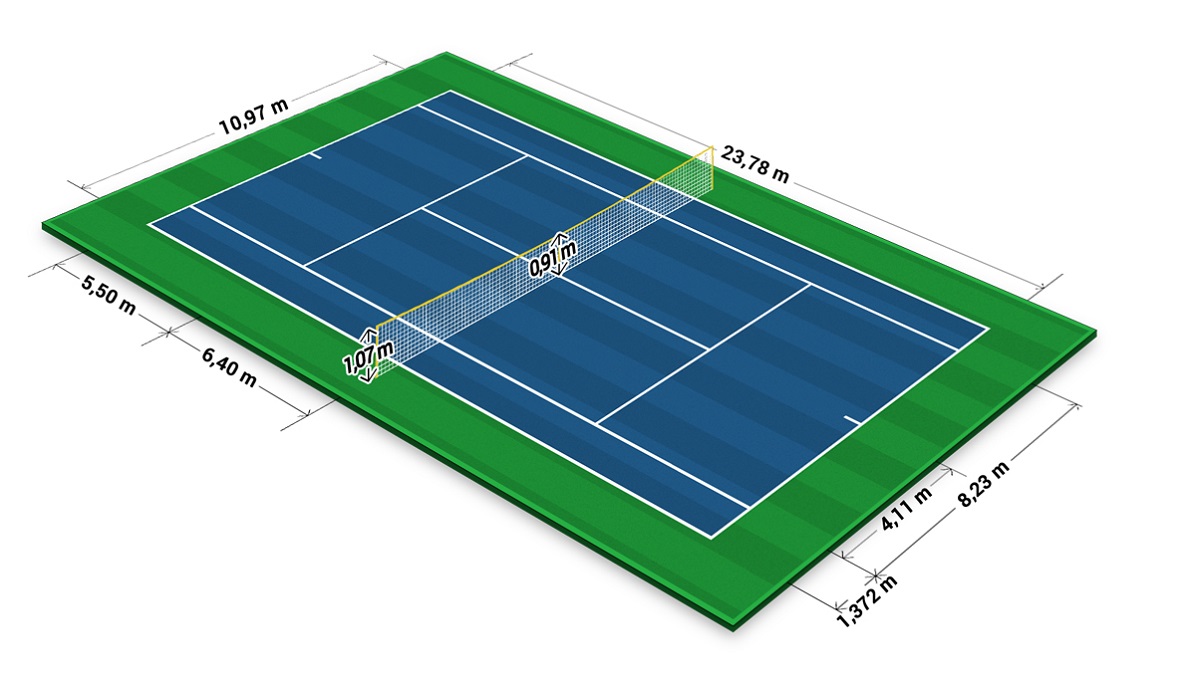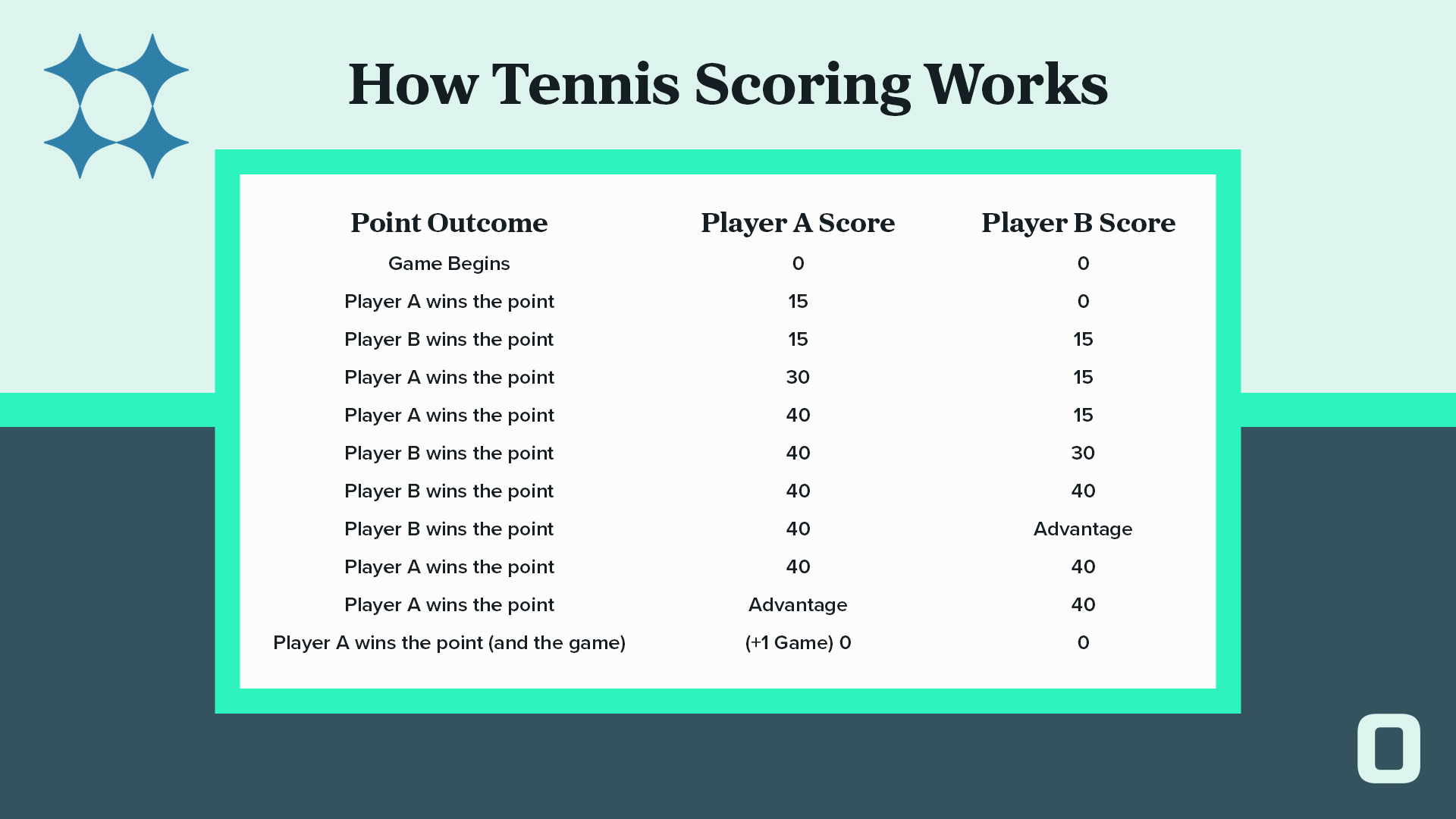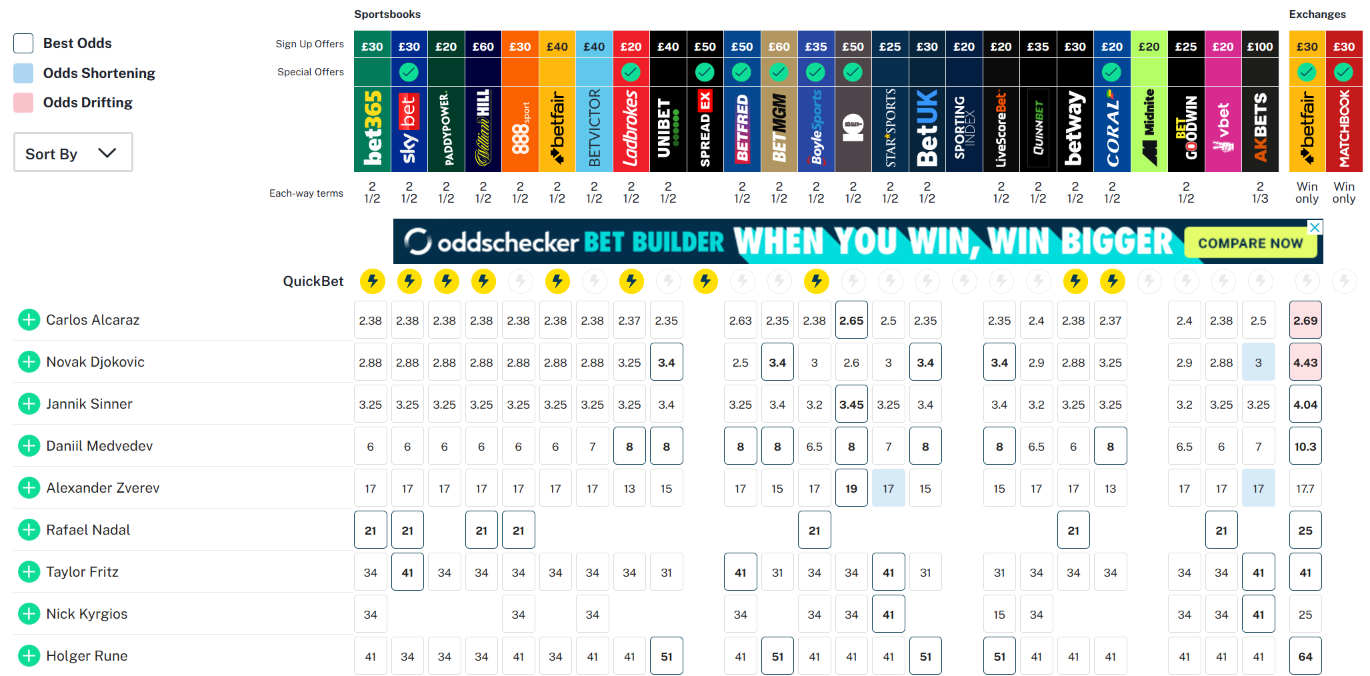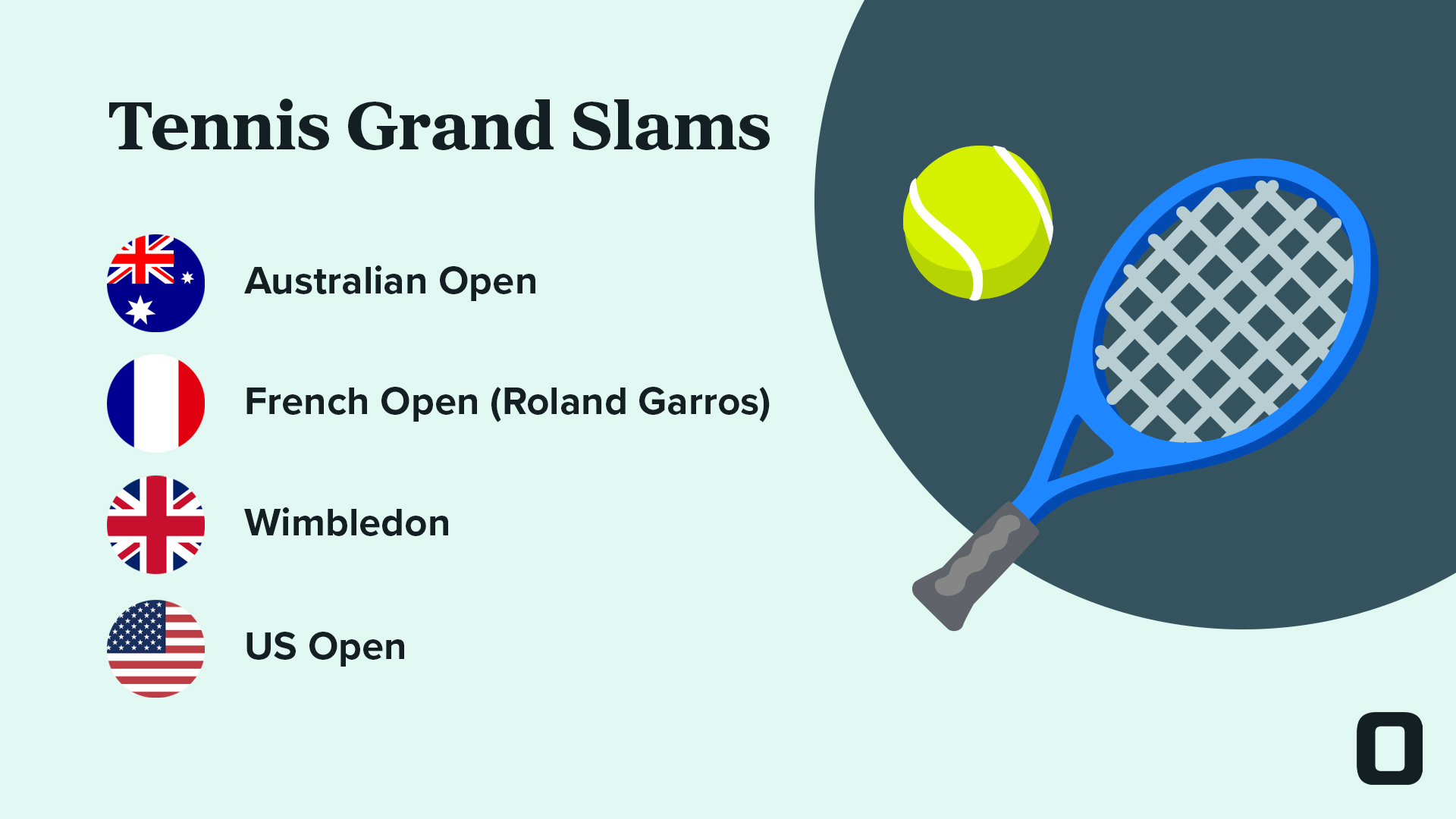The Ultimate Tennis Betting Guide 2026
Tennis is an international sport played and watched across the world. It attracts multi-million-dollar sponsorships both for tournaments and players and is estimated to have one billion fans worldwide.
Many people only really know tennis for the four Grand Slams that take place in Australia, France, England and the US each year. But tennis is actually a year-round sport with weekly tournaments that run from January to December at all levels.
What that means for sports bettors, is that there is almost always some tennis markets to bet on. Plus, tennis is an easy sport to track in terms of player form and results as rankings are updated weekly and many of the events are televised too.
There are multiple betting markets for tennis, everything from tournament winners and player performances to individual matches, sets, games and even points. But before we go into the betting markets, let’s take a quick look at the rules and scoring of tennis to understand how to bet on it.
Tennis Rules
Tennis is a racket sport played by either two individuals in opposition to each other (singles) or two teams of two players in opposition to each other (doubles).
It is played with a racket, a ball and a net and on different surfaces depending on the tournament, which can be grass courts, clay courts or hard courts.
Courts are rectangular in shape and measure 78 feet (23.78 m) long, and 27 feet (8.23 m) wide for singles matches and 36 ft (11 m) for doubles matches. The same court is used for both singles and doubles, however, the court markings indicate the correct playing space for each.
The net is 3 feet 6 inches (1.07 m) high at the posts and 3 feet (0.91 m) high in the centre.

A Chair Umpire oversees each game to ensure the Rules Of Tennis, Code Of Conduct and Tournament Regulations are followed at all times.
In some tournaments, line umpires are also used to judge whether the tennis ball has remained in or out of court lines. However, line umpires have been replaced with line technology in recent years at many events.
A tennis match starts when the first serving player, which is decided through a coin toss, serves the tennis ball into the correct section on the tennis court. If the serve is good then the players send the ball back and forward over the net to try to win the point.
Points are scored when your opponent cannot play a valid return pass. This can be because they can’t reach the ball, their return hits the net or they play the ball out of court. The ball is allowed to bounce once before hitting it, but not twice.
The aim of the game is to score points, to win games, and ultimately win more sets than your opponent.
Tennis Scoring
Tennis has one of the most confusing scoring structures of all sports and no one really knows why. We break it down in detail in our tennis scoring guide.
It is also made increasingly puzzling by the fact that different tournaments have varying formats.
However, the basic structure is points – games – sets, and we’ll go into this below.
Games and Sets
In order to win a tennis match, you must win the most sets. All tennis matches follow the ‘Best Of’ model in that they are usually the ‘Best of 3 Sets’. That means a player has to win two sets in order to win the match.
In men’s Grand Slam tournaments, this is increased to a ‘Best of 5 Sets’ model, meaning players must win three sets in order to win the match.
To win a set, you must win a minimum of six games, however there must be at least a two-game difference between you and your opponent.
You can’t, therefore, win a set by 6 games to 5. There must be a two-game margin, so you could win it at 6-0, 6-1, 6-2, 6-3, 6-4 or 7-5.
If the set is tied at 6-6, then a tiebreaker is required to decide who wins the set. The basic tiebreaker is a simple first-to-seven-points mini-match but there also needs to be a two-point margin between scores.
The only exception to this is when a Super Tiebreak is used which is in the final set of a Grand Slam. This goes up to 10 points rather than seven.
Points
Instead of a simple linear ‘1-2-3-4’ points structure, tennis uses ‘Love-15-30-40-Game’ as its points system, but in effect they refer to the same thing.
If you score one point, your score is ‘15’, two points is ‘30’, three points is ‘40’ and if you win four points in a row you have won the game.
Obviously, your opponent is also trying to score points, so a game that is tied on two points each, for example, will have the score of ’30-30’. A score of zero is given the name ‘Love’.
Deuce and Advantage
Often tennis games are straightforward in that one player will win a game by a clear margin. However, in close games, if the score goes to 40-40 (in order words both players have scored three points), then this is called Deuce.
Deuce means that you now have to win two points in a row to win the game. On Deuce, the player who wins the next point is said to have an ‘Advantage’ as they only need one more point to win the game.
However, if they don’t score the next point, it goes back to Deuce. This continues until one player scores two points in a row to win the game.
Serving, Aces and Breaks
Players take turns to serve in tennis and when they serve it is seen as a big advantage.
Firstly, by serving they can decide where to place the first shot, how much power to put on it and ultimately try to dictate the game and make it as hard as possible for the opponent to return it.
Secondly, an ‘Ace’ is basically a serve that is not touched by the receiver at all, and therefore wins an easy point for the server.
Because players are expected to win the games they serve, when they do, this is called a ‘Hold of Serve’. However, if they do not win the game that they have served, they have had a ‘Break of Serve’.

Tennis Betting Markets
Tennis betting markets are available all year round and they are as wide or as intricate as you want them.
As well as pre-match bets, tennis can be a very good sport for in-play betting. This is because tennis is known for momentum swings so the odds can change regularly and they have quite a lot of player breaks in between games which allows for more time to place in-play bets.
Here are a few of the most common tennis betting markets available:
Match Winner
This is a simple bet on which player or players (in the case of doubles) you think will win the match. As usual, the favourites are the player(s) with the lowest odds.
Correct Score - Match
You can place a bet on what you think the final match score will be in terms of sets. In the recent Wimbledon final between Carlos Alcaraz and Jannik Sinner, which was a ‘Best of 5’ match, you could bet on the following markets.
Alcaraz 3-0, 3-1, 3-2
Sinner 3-0, 3-1, 3-2
Correct Score – Sets
You can place bets on what you think the individual score in a particular set will be. As each set has a minimum of six games, the potential bets would be:
Alcaraz or Sinner to win 6-0, 6-1, 6-2, 6-3, 6-4, 7-5, 7-6 (tie-break) in Set 1, 2 or 3.
Set Betting
This is a bet placed on which player will win a specific set, e.g. Set 2 Winner.
Game Betting
You can place a bet on what you think the total games in a match will be, which is usually an under/over bet. You can also place bets on whether the total number of games in a match will be odd or even, or how many games will be in a certain set.
Handicap Betting
This is where one or both of the players is given a virtual lead or deficit in scoring to make betting odds more equal. For example, Carlos Alcaraz handicap betting at -1.5 would mean he would have to win the match by two clear sets in order for this bet to win.
Tournament Winner and Positions
Tournament winner bets are usually available before all major tennis tournaments. This is an overall bet on who you think will take the trophy. In the biggest tournaments, such as Grand Slams, you can often bet on who you think the quarterfinalists or semi-finalists will be as well.
In-Play Betting
Because tennis is ideal for in-play betting, you can place bets on the ‘Next to win’ markets. These are bets you can place during a live tennis match on things such as - next to win a set, next to win a game, next to serve an ace or even next to win a point, if you’re super quick!
How To Find The Best Tennis Betting Odds
An important factor when betting on any sport is to secure the best odds you possibly can.
The better the odds you take, the more value you're going to get back.
You can use a betting odds comparison site such as Oddschecker to find the best available tennis odds at any bookmaker.

Oddschecker shows the odds you can use at various online bookmakers so you can quickly see which site is offering the best tennis odds on any given bet.
The best odds are shown in bold allowing you to easily identify the best value bets.
You can search and compare a whole range of tennis betting markets too.
Tennis Tournaments
Now you know what tennis betting markets are available, let’s look at the different tennis events that you can bet on.
Tennis is made up of a tournament calendar for both male and female players. Each tournament has a ranking in terms of their size and importance to the player with regard to prize money and ranking points.
The four Grand Slams are obviously the biggest and this is where you’ll find the most betting markets. These are followed by ‘1000’ events, which usually have wide betting markets too. These events are good to bet on as the bookies are often competing with each other to provide the best odds.

The smaller 500 and 250 events have fewer markets but will usually have individual markets for each match at most bookmakers.
The men’s game in tennis is governed by the ATP (Association of Tennis Professionals) while the women’s game is governed by the WTA (Women’s Tennis Association).
The global governing body for tennis is the International Tennis Federation (ITF), which organises team events. The Grand Slam tournaments and Olympics have their own organisation structure, as does the Laver Cup, which is essentially an exhibition event.
Tournaments take place across the world on a truly global scale and many of the events have been running since the beginning of the sport itself.
Some of the biggest tournaments of the 2026/27 season are as follows:
- January – United Cup & Australian Open (Grand Slam)
- February – Rotterdam Open, Rio Open & Dubai Championships
- March – Indian Wells & Miami Open
- April – Monte Carlo Masters & Madrid Open
- May – Rome Open & Roland Garros (Grand Slam)
- June – Queens Championships and Halle Open
- July – Wimbledon (Grand Slam)
- August – Canadian Open and Cincinnati Open
- September – US Open (Grand Slam) and Laver Cup
- October – Shanghai Masters & Paris Masters
- November – Paris Masters, ATP Finals & Davis Cup
- December - Next Gen ATP Finals
Tennis Formats
There are various forms of tennis that take place on the circuit that you can bet on. The main five categories that have the most betting markets are:
- Men’s Singles
- Women’s Singles
- Men’s Doubles
- Women’s Doubles
- Mixed Doubles
You can also find tennis betting markets for Wheelchair Tennis.
Tennis Betting Considerations
If you’re looking to bet on tennis, there are few factors to take into consideration that can help you decide who and what to bet on. Player rankings and court surfaces are two key elements that can shape your betting strategy, so let’s take a closer look at these.
Tennis Player Rankings
Player Rankings are one way to keep in touch with how well tennis players are performing and can help guide you with your tennis bets.
Both the ATP and WTA have weekly updated player rankings based on performances in both singles and doubles over the previous 52 weeks.
As players play tennis events all year round, they can pick-up or drop ranking points based on how far they reach in each tournament. However, not all tournaments carry the same ranking points.
Tennis tournaments have different ranking points as follows:
ATP 250/ WTA 250 – Up to 250 player ranking points available
ATP 500/ WTA 500 – Up to 500 player ranking points available
ATP 1000/ WTA 1000 (Masters) – Up to 1000 player ranking points available
Grand Slam - Up to 2000 player ranking points available
Although it's fair to assume that players in the top ten rankings are all generally high-performing players, there are limitations with how useful the rankings are to betting.
The variance in ranking points can mean that one player who wins a Grand Slam and receives 2000 points will look more in form than a player who has won four or five tournaments in a row at smaller ranked events. Yet the latter may be more in form going into a match.
Secondly, players are capped at how many ranking points they can pick up in one season.
In ATP, men’s players have a cap of 19 events, while women have a cap of 16 events. The top men’s tennis players, therefore, will usually play the four Slams, the 8 mandatory Masters Events and then use their best seven other results from the calendar.
Finally, the ranking points take into consideration the full 52 weeks prior to each update. So a player can stay high up in the rankings, even if they haven’t played for several weeks based on points they have picked up earlier in the year.
Despite these issues, the rankings can give you a quick snapshot of general player capabilities. Certainly a player who has hit the top ten for the first time or climbed to their highest ranking position is worth considering when placing tennis bets.
Tennis Surfaces
One of the main factors to take into consideration when betting on tennis is the surface on which they are playing.
This is vital to player performance as some tennis players are specialists on a particular surface but perform poorly on others.
Some great examples of this are:
Former world number one Thomas Muster famously won 44 career titles, but 40 of them were on clay. He simply couldn’t find any consistent form on other surfaces.
Current top ten player Daniil Medvedev, also former world number one, has won 18 hard court titles, but only one on grass and one on clay so far in his career.
Rafael Nadal is known as the ‘King of Clay’ because he has won a record-breaking 14 Roland Garros titles. However, he has only won 8 other Grand Slams in total on other surfaces.
Of the four Grand Slam tournaments, two are played on hard courts (Australian Open and US Open), one is played on clay (Roland Garros) and the other on grass (Wimbledon).
Although the best players in the world can adapt and win on different surfaces, most players have a preferred playing surface which gives them an advantage, so it is important to factor this in when making tennis bets.
This also applies to the general tennis calendar which goes in seasons. Clay court season tends to be in April and May, while grass court season tends to be June and July. The rest of the season is predominantly hard court with a few exceptions.
Knowing player specialities on each surface can help you immensely when placing bets on tennis.
Tennis Retirement Rules
Tennis retirement rules are something bettors need to be aware of when betting on the sport. It refers to what happens when a player has to retire from a match due to injury or illness.
This can have a significant impact on a bet as in some cases the bet will be void and in other cases it will stand. This is usually down to the specific bookmaker.
There are four main betting rules for tennis retirements:
1. Ball Served Rule – Bets are valid if at least one serve has taken place
2. Set Completed Rule – Bets are valid if at least one set has been completed
3. Match Completed Rule – Bets are only valid if the full match is completed. Therefore, in most cases if a retirement occurs during the match, bets are void.
4. Match Completed except Disqualification – Bets are only valid if the full match is completed, unless a player is disqualified. If a player is disqualified, then the bet will be valid and the disqualified player will have ‘lost’ the match.
It’s a good idea to check the specific tennis retirement rules of the individual bookmaker before you place a bet so you know where you stand if this situation occurs.
Is Tennis Eligible For Matched Betting?
Absolutely. Tennis is eligible for Matched Betting, as long as bookmakers are offering bonuses and promotions. You’ll often see these available around Grand Slam, Masters or Olympic events.
The only caution to Matched Betting on tennis is the retirement rules which can come into effect regularly in tennis, more so than other sports.
Generally, bookmakers and exchanges have the same rules when it comes to sports bets. However, because the tennis retirement rules vary with different bookmakers it can mean that if you place and lay a bet, the rules at the bookie and the exchange may be different.
In rare cases, this can lead to issues, and a potential loss, so it’s always worth checking out the specific retirement rules of the bookie you're placing a bet with, to ensure that it matches with the exchange.
To find out more about Matched Betting and how it can give you the edge over the bookies and return some guaranteed wins, check out our guide.
Updated: 5 Jan 2026
The Author
Lynsey has been writing in the iGaming and sports betting industry for almost a decade. She has three years of experience in Matched Betting and enjoys sharing her expertise and knowledge to help others.

